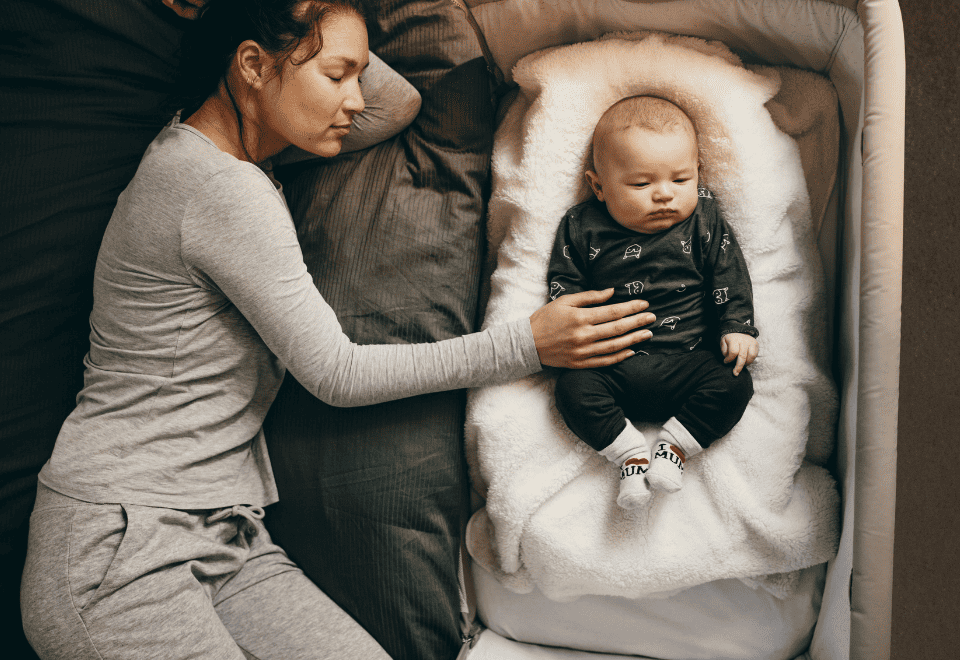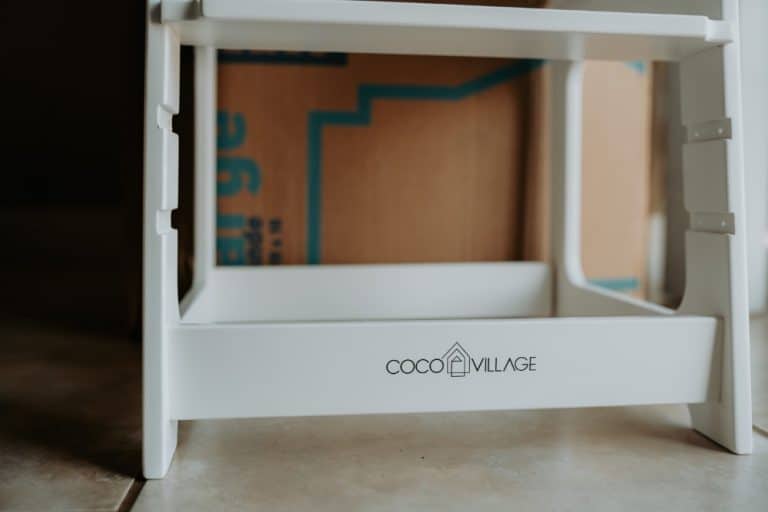Risks And Benefits Of Co-Sleeping
This post may contain affiliate links, which means I’ll receive a commission if you purchase through my links, at no extra cost to you. Please read full disclosure for more information.
You might have heard of some good and bad things about co-sleeping. And got easily confused between the difference in co-sleeping and bed-sharing because they were used interchangeably.
It’s so natural to be anxious about sleeping arrangements when you bring your baby home and maybe even long before then.
In this blog post, I’m going to go over important co-sleeping risks and benefits along with differentiating between closely related terms to co-sleeping like bed sharing and room sharing.
Co-sleeping is a more general term for a parent sleeping by or around their baby. And it’s when a parent sleeps in close proximity to their baby – not necessarily in the same bed.
Bed sharing is one example of co-sleeping. Unlike the general term, bed sharing is a specific term describing when a parent sleeps on the same bed as their baby.
And room sharing is a specific term describing when a parent is sleeping in the same room but on a separate surface.
There are a lot of opinions out there about co-sleeping and bed sharing. But I’m providing factual information provided by accredited sites.
Read more about my personal experience with bed sharing and ways to bed-share safely.
What does the American Academy of Pediatrics recommend?

According to American Academy of Pediatrics (AAP), room sharing without bed sharing is included on the list of AAP safe sleep environment recommendations. AKA they recommend you co-sleep with your baby without actually sharing the same bed as them.
It’s recommended that infants sleep in the parents’ room on a separate surface like a crib, portable crib, or bassinet for at least 6 months, preferably a year prior to letting them sleep in their own room.
What are the benefits of co-sleeping?
One of the most important benefits of co-sleeping (room-sharing, NOT bed-sharing) is the reduced risk of sudden infant death syndrome (SIDS).
Another benefit is that moms tend to breastfeed for longer when co-sleeping. A longer breastfeeding journey is beneficial because breastfeeding is associated with a reduced risk of SIDS.
The reason breastfeeding reduces the risk of SIDS is because breastmilk is digested quicker than formula. Therefore, breastfed babies tend to eat more frequently than formula-fed babies which makes them wake up more often.
Co-sleeping makes it much easier for breastfeeding moms because their babies are an arm’s length away to easily breastfeed and be able to hear their baby quicker than if they were in a different room.
And as Leslie Solomonian, B.S., a doctor of naturopathic medicine stated in NY Metro Parents, room sharing helps parents connect with their babies more and promotes healthy neurotransmitters and hormones in the body.
Overall, there are emotional and social benefits to co-sleeping.
Related Posts
Everything You Need To Know About Breastfeeding Benefits And Challenges
The Major Differences Between Baby Blues, Postpartum Anxiety, Depression, And Psychosis Made Easy
What To Do After Your Baby Fell Off The Bed And How To Bed Share Safely
What are the risks of co-sleeping?

The biggest risk of co-sleeping is the temptation of bringing your baby back in bed, also known as bed-sharing. Bed-sharing has been associated with a high risk of SIDS.
American Academy of Pediatrics advises against bed-sharing. But understands there are times where parents will fall asleep with their baby while feeding.
And AAP mentioned there is evidence that suggests it’s less hazardous to fall asleep with the baby on an adult bed versus a sofa.
A drawback of co-sleeping could also be the lack of intimacy for you and your partner.
When should I start sleep training my baby?
It’s recommended to co-sleep until your baby is at least 6 months. And parents can begin sleep training their baby after 6 to 12 months.
However, if your sleep routine is going well and everyone is happy then you don’t necessarily have to sleep train your baby.
Overview Of Co-Sleeping
Co-sleeping and bed-sharing are not exactly the same. You can think of co-sleeping as the main tree and branching off this tree are bed sharing and room sharing.
Ultimately, whether you choose to co-sleep (room share or bed share) is up to your family dynamic and personal preference. I hope these co-sleeping risks and benefits help in your decision-making!






